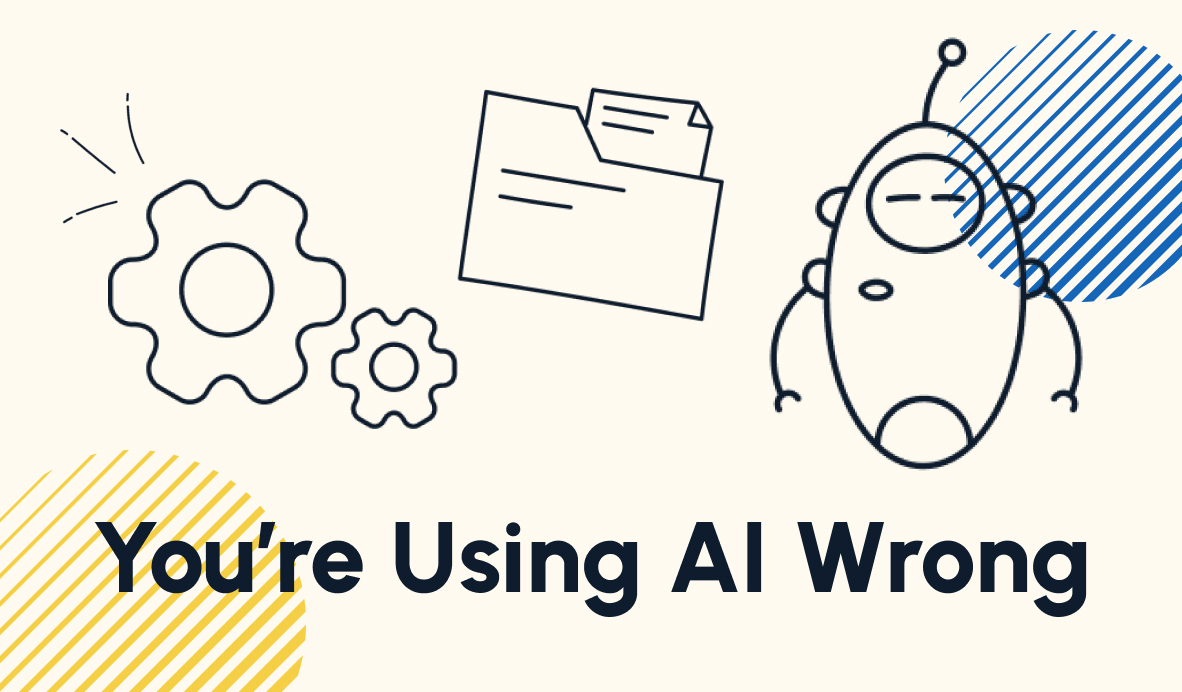Get Into the Right Mindset for Automation with these Thought-Provoking Books
Automating your workflows can be a challenging prospect. While knowing your way around Zapier or Integromat will be helpful, it's also important to have a high-level strategy that guides your automation efforts. These three books will help you to think about your company and workflows in a way that leads to effective automation.
March 2, 2022

Automation requires the right mindset to be successful. Building without a strategy can lead to inefficient and less useful workflows which your team won’t want to start using.
On our blog and YouTube channel, we’ve shared many tutorials to help share the technical knowledge needed to build no-code and low-code automations, but we also want to help business leaders to craft their big-picture strategies for automation that go beyond any one app or tool.
In this post, we’re going to share three books you can read now to start preparing for automation. These books aren’t how-to guides, or even books that are strictly about automation at all.
Instead, these are books that will get you into the right mindset for automation. They’ll prepare you with the philosophy you need to make good choices and build your automated workflows the right way.
We’ll tell you a little about each of these books and what kind of lessons you can take away from them. We’ll also include Amazon links where you can purchase the books if you’d like.
The End of Average

Nobody is really average
The first book we’ll look at is The End of Average by Todd Rose. In the book, Rose explores the notion of averages, and highlights how the very concept of “average” can be misleading if it’s not used properly.
To illustrate the point, he cites an example of the US Air Force designing the cockpit for a new plane in 50s based on the measurements of the average fighter pilot. However, they were surprised when their new planes experienced an unusually high rate of crashes. After some thorough investigation, they discovered that no one pilot who flew the plane actually fit the supposedly “average” measurements, making the cockpit uncomfortable for the pilots and more difficult to fly. Going forward, the Air Force abandoned the idea of building a cockpit for a single average, and instead focused on making adjustable seats to accommodate all of their pilots. They quickly found that the crash rate decreased due to the improved design.
This anecdote illustrates that while we often assume that using a statistical average is a good basis for a one-size-fits-all approach, this isn’t always the case. Instead, making sure that something can be adjusted as needed is often a better way to support
Automate for individuals, not for averages
How can you apply Todd Rose’s thoughts in The End of Average to no-code automation?
You can start by building your automations with specific individuals in mind. Instead of creating an automation that aims to solve everyone’s problems all at once, focus on addressing a single person’s pain points first.
Test the automation with that person and tailor it to their needs. Make sure that it really addresses their issues first, so that they can adopt it seamlessly into their workflows. From there, you can start fleshing it out and accommodating more use cases. You can add optional paths into your automations that will only trigger if the user wants them to, or if the
If you just start by building for a generic, “average” user, you may end up building a tool that doesn’t really suit anybody at all.
Buy The End of Average on Amazon
Antifragile

Antifragility produces strength under pressure
Next, we’d like to recommend Antifragile by Nassim Nicholas Taleb. In this book, Taleb introduces the concept of “antifragility” and how it applies to a variety of systems.
Antifragility is meant to be the exact opposite of fragility, and Taleb points out that this isn’t the same thing as strength or sturdiness.
If you drop a wine glass and it shatters on the ground, you’d consider that glass to be fragile. If you were to drop it and it stayed intact, you might call it strong or sturdy.
But what if dropping the glass on the floor actually made it more resilient? If something grows stronger when pressure is applied to it, then it meets Taleb’s criteria for antifragility.
For instance, the human body can be considered antifragile in certain ways. We may get sore at first when we start exercising, but over time, our muscles become stronger and more capable the more we work them out.
For entrepreneurs and business leaders, antifragility means building a company that can respond positively to difficult situations. Challenges should spur growth and evolution, not crisis and panic.
Building antifragile automations
Your workflows and systems aren’t going to remain the same forever. As your business grows and changes, your automations need to be able to keep up. In other words, you need to build your automations with the antifragile concept in mind.
You can’t always predict your future needs, but you can create automations in a way that easily enables updates. Whenever possible or practical, we recommend using an app like Airtable to perform calculations, formatting, and conditional logic rather than including it within your Zaps or Integromat scenarios. Then, you can change your automations with a quick database update.
For instance, let’s say you want to build an automation that sends a progress update to your clients each month. You could set the trigger in Zapier to a scheduled automation that runs every month, but you’d have to turn off and edit the Zap to change that trigger later. Instead, if you set your trigger as “New Record in View” in Airtable, you can change conditions for that view on the fly without having to open Zapier at all.
While it would be nice to build an automation once and just let it run passively, the reality is that you’ll have to make updates sooner or later. Building your automations to be easily updated will make them better able to handle difficult and changing situations.
The Cold Start Problem

Exploring network effects in The Cold Start Problem
Finally, let’s take a look at The Cold Start Problem by Andrew Chen. In Cold Start, Chen examines the power of network effects, and demonstrates how networks can explode with exponential growth once they cross a certain threshold of users.
After reading The Cold Start Problem, you’ll realize that network effects are present everywhere, and they’re actually a huge part of how startups achieve success.
The book focuses a great deal on the semantics of defining how network effects relate to each other, and identifies the component pieces that make up network effects.
While Chen’s book mostly looks at large networks of companies and consumers, you can see a similar phenomenon at work when a company begins adopting automation into their daily work.
Achieving a network effect with automation
As you start automating, you’ll likely begin by building a few individual workflows. At first, it might not seem like your automation efforts will be enough to really save time at a significant scale.
However, one of the benefits of automation is that each automated workflow that you build enables you to create additional workflows. This is because each automation can generate and store critical data related to your business processes, which can then be repurposed to fuel further actions.
For instance, let’s say that you’ve built an automation for new employee onboarding. Whenever you hire a new team member, the automation sends them relevant training material and sets their initial tasks.
As this automation runs, it can create a database with the name and contact info of each new employee, their role, their department, their start date at the company, and more. Over time, you can use that data to add more functions to your automation. You could send each new employee an onboarding feedback survey a month after they start; you could automatically compile reports to see how quickly your new hires are completing their tasks, or how often they access the resources they share.
Regardless of how you choose to expand your automations, you’ll see that adding new features to your automations will only make them a larger and more important part of your daily workflows.
Buy the Cold Start Problem on Amazon
Finding a new perspective on automation
Workflow automation is a great way to save time and produce more consistent results at your company, but it can require adjusting the way you think about your business. If you’re looking to get a fresh perspective that will prepare you for building automations that support your team, these books are the right place to start.
If you’d like to learn more about automation, check out our blog or our YouTube channel. You can also follow XRay on Twitter, Facebook, or LinkedIn.











